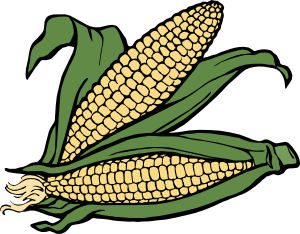The trouble with plants, and the great thing about plants, is that they’re living creatures. Strangely enough people don’t often think about plants this way. They totally miss the miracle before their eyes; that they’re respirating, growing, oxygen creating, living beings. The down side, if we choose to see it as a down side, is that living things are not plastic, they require care, they grow larger, they get sick, and as with all living things - they eventually die.
 |
| A Sky Mall ad for artificial plants |
The Case for Real Plants and Gardening.
Growing plants can be very satisfying. There is great satisfaction in nurturing a plant from a small seed or seedling, watching it mature into a plant that rewards us for our effort. We get shade from trees. We get fruit to eat. We get the joy of seeing them make delicate, colorful, beautiful flowers as if by magic. We are willed to breath deep and then smile when confronted with the sweet smell of a lilac or a mock orange. What joy there is in watching monarch butterflies dance about a butterfly bush, or hummingbirds darting about a fuchsia drinking nectar!
Each day when I get home from work, I get great satisfaction from walking my garden to see what has changed, what’s in bloom, the magical appearance of fruit or fall foliage. Each day is full of surprises and the tension that comes from a hard day's work dissipates into a feeling of relaxation and awe. Sure it takes a bit of hard work and sweat equity to create a garden, but the best things in life require effort. But don’t you value things more when you earn them and have a role in their creation?
Each day when I get home from work, I get great satisfaction from walking my garden to see what has changed, what’s in bloom, the magical appearance of fruit or fall foliage. Each day is full of surprises and the tension that comes from a hard day's work dissipates into a feeling of relaxation and awe. Sure it takes a bit of hard work and sweat equity to create a garden, but the best things in life require effort. But don’t you value things more when you earn them and have a role in their creation?
So tell me where is the joy in owning a plastic fish, a robotic dog (Remember when this was the craze in

Some might argue these games are a gateway drug that lead to real gardening or fish collecting, but I’m not so sure. My wife played Tap-Fish for some time but has never moved on to a real fish tank. Have any of you Farmville folks taken up farming yet?
So where do we go from here? It seems quite simple to me. The best thing we can do for a friend or a child is to give them a real, honest to goodness, living plant. You’ll be doing them a great service. It will get them out of their chair and away from their computer. It will give them the change to taste a real pear or smell the sweet fragrance of a real lilac. Until someone owns and grows a plant themselves, they’ll never understand the joy that comes from growing a plant or gardening. Most people will find it more addicting than Farmville and a lot more satisfying. Besides – no one will ever de-friend you for sharing a quart of real, honest to goodness raspberries.












